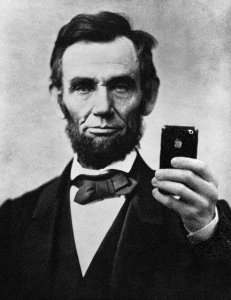
The following post was written by Dr. Dale Meyerrose as part of the Columbus Business Firstâs CIO Tomorrow Conference. Dr. Meyerrose is one of the featured speakers in the Voice America Innovative Leaders Driving Thriving Organizations interview aired on April 26, 2016.
If you were to take a âprofessional selfie,â what would you see? Â What would others see? Â How would the perceptions of each correlateâor not?
Many of us in the technology business built reputations on our ability to keep the IT running, perform miracles on shoe-string budgets, manage IT projects, understand enterprises and processes, and respond to emergencies. Â Our view of that selfie would likely reflect pride in our technical acumen and ability to deliver on many things. Â Important, yes. Â But in the macro-scheme of business, do those things really matter? Â Do they earn you a seat at the decision tables within your respective organizations? Â Do they compel the Board of Directors to seek you counsel? Â The evidence over many years, lo decades, is clearâthey donât!
Why donât others, looking at that same selfie, see you as necessary for setting corporate strategy? Â Linked with company performance and customer satisfaction? Â Value your contributions as cultivating opportunities and revenue, vice as a cost center to be minimized? Â A crucial player in the âbigâ decisions over the course of time? Â Hmmm.
In my view, the reason is that many CIOs (and CSOs and CISOs for that matter) donât move beyond the âplumbingâ of their younger years. Â Make no mistake, the plumbing has to work and work well. Â However, the skills that made us good technicians and program managers early in our career, donât translate into the talent needed to lead complex organizations in todayâs demanding business world. Â Consequently, I believe it critical for CIOs to differentiate what matters from whatâs merely important.
⢠Assigned roles and responsibilities are important, but being able to tell the âbig pictureâ story, in a language meaningful to senior leadership is what matters.
⢠Leveraging the best technology ideas is important, but execution on the chosen investments is what matters.
⢠Fear-of-the-inevitable is important to consider, but the art-of-the-possible and operational success are what matters.
⢠Risk and gap assessments are important, but determining the ânet benefitâ calculation is what matters.
⢠In-sourcing and out-sourcing IT issues are important, but having the talent at the intersection of understanding both purpose and technology is what matters.
I talk to many CIOs who are frustrated by their lack of influence on major decisions made within their organizations. Â Many of these very capable folks have yet to realize that people relationships and determinations are more important than the technical ones. Â They lack the experience or orientation, to relate, in business terms, the criticality of their input. Â And demonstrate that it is inseparably linked with major decisions and investmentsâand the companyâs success. Â Lastly, they donât understand that strategy is more about resolve than brilliance.
Does your professional selfie look âup and outââor âdown and in?â Â With almost forty years of experience in this discipline, I conclude that the former âselfie poseâ is one of a successful CIO. Â These are leaders that focus on the few results that matter, while leading others who take care of the myriad of other important tasks.

AUTHOR INFORMATION
Dr. Dale Meyerrose, Major General, U.S. Air Force (retired) is President of the MeyerRose Groupâa cybersecurity, executive training/coaching, and eHealth technology consulting company. Â He is an adjunct instructor for Carnegie Mellon University, Institute for Software Research running their Cybersecurity Leadership Certificate program. General Meyerrose, a Southwest Asia veteran, was the first Senate-confirmed, President-appointed Chief Information Officer for the Intelligence Community after over three decades of military service.




